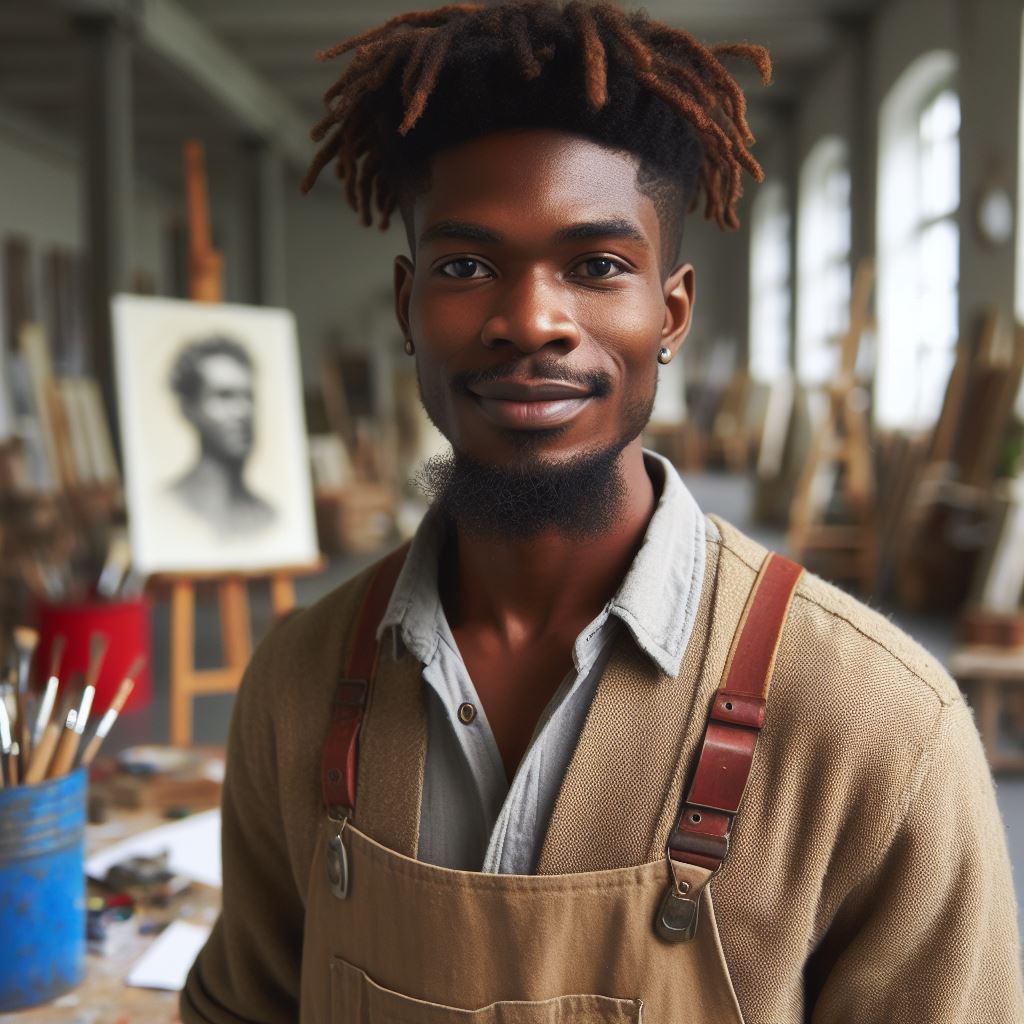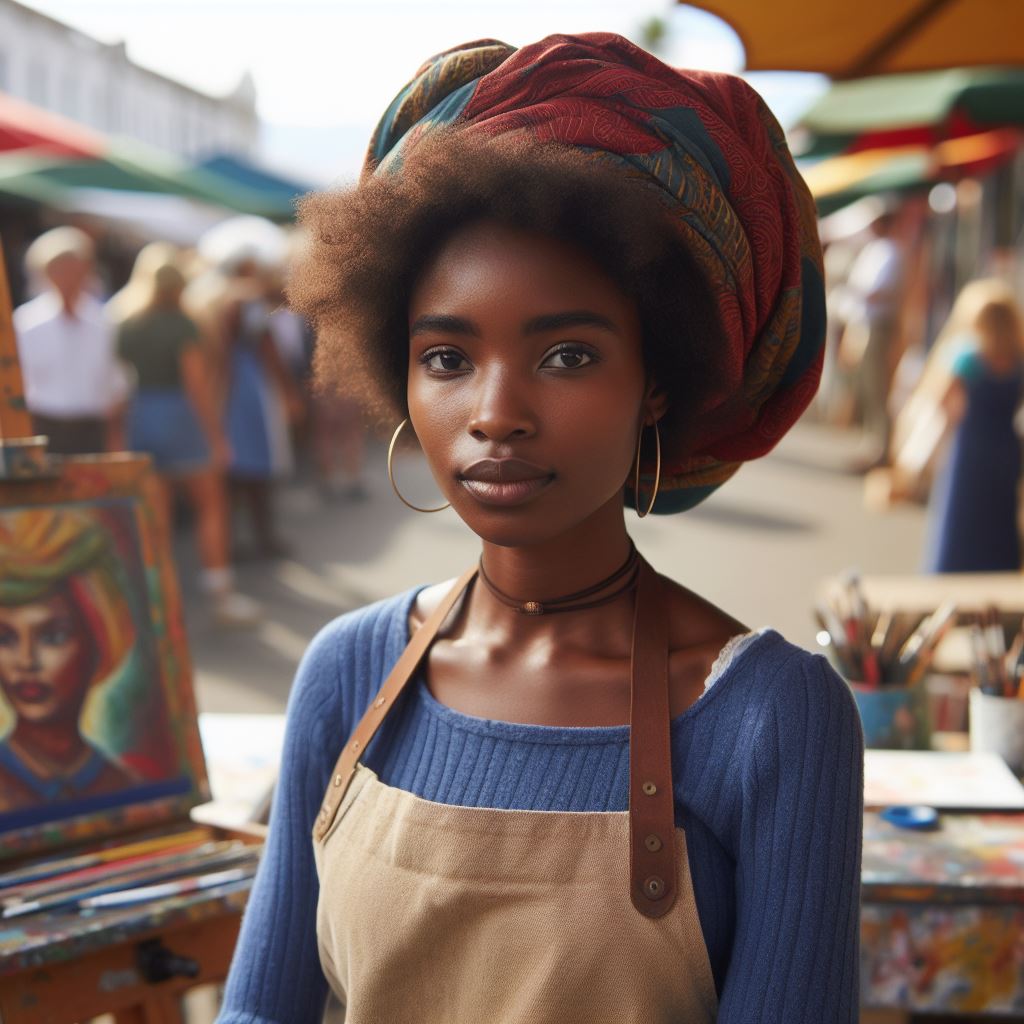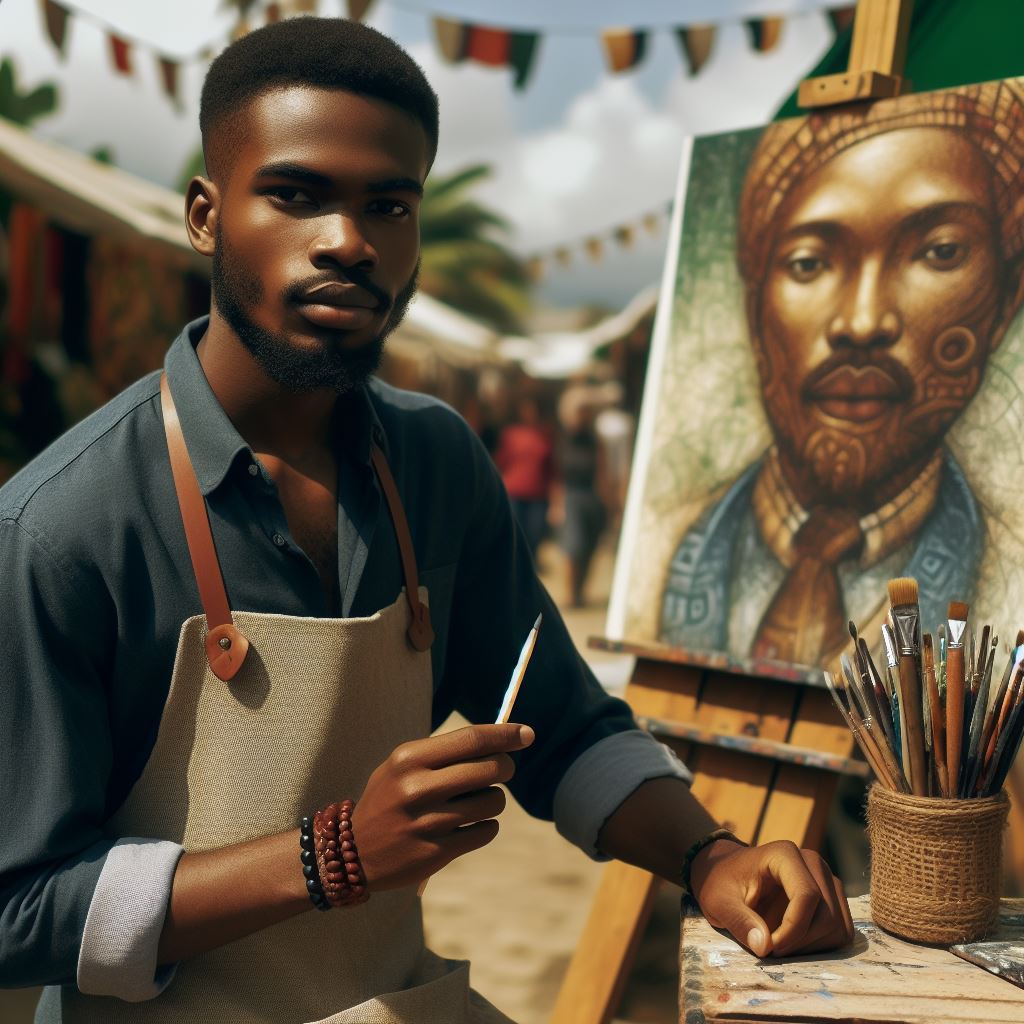Introduction
Nigerian art has become a significant player in the global art market.
With its rich cultural heritage and diverse artistic expressions, Nigeria has seen a surge in interest from collectors and art enthusiasts worldwide.
Renowned Nigerian artists such as Ben Enwonwu, El Anatsui, and Njideka Akunyili Crosby have gained international recognition for their innovative and thought-provoking work.
These artists continue to push boundaries and challenge traditional notions of art.
Nigeria has witnessed the emergence of various art movements, including the Nsukka School, which was founded in the 1970s at the University of Nigeria, Nsukka
This movement focused on the promotion of traditional African art forms and inspired a new generation of artists to explore their cultural heritage.
Contemporary Nigerian art evolves, blending traditional techniques with modern influences, resonating worldwide with dynamic works.
The Nigerian art scene is a vibrant and thriving community that showcases the country’s rich cultural tapestry and artistic legacy.
History of Nigerian Art
Nigeria has a rich history of art that dates back centuries, with a strong emphasis on traditional art forms that have influenced contemporary art in the country.
Historical Background of Art in Nigeria:
The history of Nigerian art can be traced back to ancient civilizations such as the Nok culture, which produced intricate terracotta sculptures dating back to around 500 BC.
During the colonial period, Nigerian art experienced a shift as European influences began to impact the traditional art forms of the region.
This period also saw the emergence of Nigerian artists who sought to blend traditional techniques with modern styles.
Traditional Nigerian Art Forms and Their Influence on Contemporary Art
Traditional Nigerian art forms such as pottery, weaving, and sculpture continue to play a significant role in contemporary art practices in the country.
These traditional techniques and motifs are often reinterpreted by modern artists to create innovative and unique works.
Contemporary Nigerian artists explore themes of identity, spirituality, and cultural heritage, inspired by Yoruba and Igbo artwork’s patterns and symbolism.
Key Artists and Art Movements that Have Shaped the Nigerian Art Scene
- Ben Enwonwu: Known as the “father of Nigerian modern art,” Enwonwu’s work helped to elevate Nigerian art on the global stage.
- El Anatsui: Anatsui’s innovative use of recycled materials in his sculptures has garnered international acclaim and influenced a new generation of Nigerian artists.
- Nsukka Art School: Founded in 1971 at the University of Nigeria, Nsukka, this art school played a crucial role in shaping the contemporary art scene in Nigeria by promoting experimental and interdisciplinary approaches to art making.
- Chike Obeagu: Obeagu’s vibrant and colorful paintings reflect his Nigerian heritage and contemporary social issues, making him a prominent figure in the Nigerian art scene.
Key artists and art movements shape Nigeria’s cultural identity, contributing vibrancy and diversity to its art scene.
Read: Art Collecting in Nigeria: A Beginner’s Guide
Emerging Contemporary Artists
As the Nigerian contemporary art scene continues to evolve, there is a new crop of talented emerging artists who are making waves with their innovative work.
These artists push boundaries, introducing new concepts to global art, refreshing Nigerian art’s perspectives.
Peju Alatise
- Unique Style: Alatise is known for her intricate mixed-media installations that tackle themes of gender, identity, and societal issues.
- Influences: Her works are inspired by Yoruba culture and mythology, blending traditional and contemporary elements seamlessly.
- Contributions: Alatise’s art challenges stereotypes and confronts social norms, sparking conversations about important issues in Nigerian society.
Victor Ehikhamenor
- Unique Style: Ehikhamenor’s signature style includes intricate patterns and symbols that reflect his Edo heritage and global influences.
- Influences: His work is influenced by traditional African art, as well as contemporary trends in the art world.
- Contributions: Ehikhamenor’s art blurs the lines between past and present, creating a dialogue between tradition and modernity in Nigerian art.
Njideka Akunyili Crosby
- Unique Style: Crosby is known for her stunning collage-style paintings that explore themes of identity, migration, and cultural hybridity.
- Influences: Her work is influenced by her Nigerian upbringing, as well as her experiences living in the United States.
- Contributions: Crosby’s art challenges perceptions of African art and expands the narrative of contemporary Nigerian art on the global stage.
These emerging artists are not only redefining Nigerian art but also shaping the future of contemporary art in Africa and beyond.
Their unique styles, themes, and influences contribute to a rich tapestry of artistic expression that reflects the diversity and complexity of Nigerian society.
Read: Key Nigerian Art Exhibitions to Attend
Art Galleries and Exhibitions
Art galleries and exhibition spaces crucially showcase Nigerian artists, both locally and internationally. They amplify talent.
Prominent art galleries and exhibition spaces in Nigeria
Here are some of the prominent art galleries and exhibition spaces in Nigeria:
- Rele Gallery: Located in Lagos, Rele Gallery is known for promoting emerging and established contemporary artists through its exhibitions and programs.
- Art Twenty One: Situated in Victoria Island, Lagos, Art Twenty One focuses on showcasing modern and contemporary art from Nigerian and African artists.
- Nike Art Gallery: Owned by renowned Nigerian artist Nike Davies-Okundaye, this gallery in Lagos features traditional and contemporary Nigerian art.
- Terra Kulture: A cultural hub in Lagos, Terra Kulture hosts art exhibitions, stage plays, and other cultural events that celebrate Nigerian heritage.
Role of these spaces in promoting Nigerian art domestically and internationally
These spaces actively promote Nigerian art, providing platforms for artists, engaging audiences, and connecting collectors.
Art galleries and exhibition spaces serve as cultural hubs where artists can showcase their talent, express their creativity, and explore new ideas.
They contribute to the growth and development of the Nigerian art scene by nurturing talent and fostering a sense of community among artists and art lovers.
Upcoming exhibitions and events in the Nigerian art scene
- Lagos Biennial: A contemporary art festival that takes place in Lagos, the Lagos Biennial showcases the work of Nigerian and international artists through exhibitions, performances, and workshops.
- Art X Lagos: An annual art fair that brings together galleries, artists, collectors, and art enthusiasts from Nigeria and beyond, Art X Lagos is a platform for promoting contemporary African art.
- Arthouse Contemporary: Known for its modern and contemporary African art auctions, Arthouse Contemporary features works by Nigerian artists alongside their peers from across the continent.
- National Gallery of Art: The National Gallery of Art in Lagos is a government-owned institution that showcases traditional and contemporary Nigerian art, making it accessible to a wider audience.
Nigerian artists seize chances to exhibit, network, and connect with diverse audiences at upcoming events.
Nigerian artists enliven and diversify the art scene, drawing global focus to the nation’s cultural richness and talent.
Read: The Role of Art in Nigerian Social Movements

Challenges and Opportunities
When it comes to the Nigerian contemporary art scene, artists face a myriad of challenges that hinder their growth and visibility.
These challenges range from infrastructural deficits to the lack of financial support and recognition.
Challenges Faced by Nigerian Artists
- Lack of proper infrastructure such as art galleries, museums, and exhibition spaces.
- Inadequate funding for projects, exhibitions, and art residencies.
- Lack of recognition both locally and internationally for Nigerian artists.
- Difficulty in accessing art materials and resources.
- Limited opportunities for art education and professional development.
These challenges make it challenging for Nigerian artists to thrive and make a sustainable living from their art.
Without proper infrastructure, funding, and recognition, artists struggle to showcase their work to a wider audience and build a sustainable career in the art world.
Opportunities for Growth and Development
- Emergence of art fairs and biennales in Nigeria providing platforms for artists to exhibit their work.
- Increasing interest and demand for African contemporary art in the global art market.
- Development of artist residencies and workshops for skill development and networking.
- Support from international art institutions and organizations promoting Nigerian art internationally.
- Growth of online art platforms and social media for artists to showcase and sell their work.
Despite the challenges, there are also opportunities for Nigerian artists to grow and thrive in the contemporary art scene.
With the increasing interest in African art globally and the support of international institutions, Nigerian artists have the potential to gain recognition and success in the art market.
Nigerian artists can forge a vibrant contemporary art scene by collaborating, advocating, and innovating. They overcome challenges, leveraging opportunities.
Read: Tips for Building an Art Portfolio in Nigeria
Global Impact of Nigerian Art
The global influence of Nigerian art and artists
- Nigerian art has made a significant impact on the global art scene.
- Artists like Njideka Akunyili Crosby have gained international recognition.
- Through their unique styles and narratives, Nigerian artists are challenging stereotypes.
Reception and Appreciation
- Nigerian art is increasingly being received positively on the international stage.
- Museums and galleries worldwide are showcasing Nigerian artists’ works.
- Collectors are investing in Nigerian art, leading to a rise in its market value.
Collaborations and Partnerships
- Nigerian artists are collaborating with their international counterparts on various projects.
- These partnerships foster cultural exchange and mutual understanding.
- Institutions are organizing joint exhibitions to promote Nigerian art globally.
Art Education and Institutions
Role of art education in nurturing and developing future Nigerian artists
Art education plays a crucial role in nurturing and developing future Nigerian artists by providing them with foundational knowledge and skills.
Also, art education introduces techniques, styles, and mediums, enabling individuals to explore creativity and develop unique voices.
Transform Your Career with Expert Guidance
Get personalized mentorship consulting that’s tailored to your unique path. Our expert advice is actionable and exclusive.
Get StartedArt education helps young Nigerian artists understand art history, theory, and criticism, which are essential components in their artistic development.
By learning about the work of past and contemporary artists, students can gain inspiration, knowledge, and insights that inform their own artistic practice.
Moreover, art education encourages experimentation and innovation by providing students with opportunities to engage in hands-on creative activities.
Budding artists explore concepts, materials, and approaches, broadening horizons, and discovering new expressions through guided exercises.
Importance of art institutions and programs in supporting Nigerian art
Art institutions and programs vitalize Nigerian art, offering platforms for exhibiting, engaging, and networking.
Artists thrive in these hubs, receiving feedback, mentorship, and exposure, fostering creativity, learning, and collaboration.
Art institutions also offer resources and facilities that artists may not have access to on their own, such as studios, workshops, equipment, and materials.
Institutions empower artists with resources, encouraging boundary-pushing, experimentation, and innovation in their art.
Additionally, art institutions host a wide range of programs, events, and initiatives that cater to artists at various stages of their careers.
Artist residencies, workshops, lectures, exhibitions, and networking opportunities assist artists in developing skills.
They expand knowledge and cultivate relationships within the art world.
Initiatives and scholarships aimed at promoting art education in Nigeria
Various initiatives and scholarships actively promote art education in Nigeria, supporting talented but financially constrained artists.
These initiatives provide funding, mentorship, and opportunities for artists to further their education, hone their skills, and develop their artistic practice.
Nigeria can nurture innovative, skilled, and culturally engaged artists by investing in art education and supporting institutions and programs.
These artists can enrich art scenes, challenge conventions, and inspire change through their creative expressions.
Art education and institutions shape Nigerian contemporary art, offering artists tools and support to succeed.
Artists utilize educational and cultural platforms, honing talents, crafting skills, and enriching Nigerian art.
Conclusion
Delving into the Nigerian contemporary art scene reveals a dynamic tapestry of creativity and expression.
Artists across Nigeria, from Lagos’s bustling streets to Abuja’s serene landscapes, craft narratives reflecting rich heritage and dynamic present.
These artists actively explore identity, tradition, globalization, and urbanization through mediums like painting, sculpture, and photography.
Engaging with Nigerian art immerses us in captivating visuals and preserves Nigeria’s cultural heritage.
Actively engaging with Nigerian artists extends beyond buying art, fostering cross-cultural dialogue and connections.
It is a testament to the power of art to foster understanding and connection in an increasingly interconnected world.
Furthermore, exploring the Nigerian contemporary art scene allows us to challenge stereotypes and misconceptions about African art.
It showcases the diversity and complexity of artistic practices within the country, highlighting the individual voices and perspectives of Nigerian artists.
By amplifying these voices, we can foster greater appreciation and recognition for the immense talent and creativity that thrives within Nigeria’s artistic community.
Embracing the Nigerian contemporary art scene is an invitation to journey into a world of boundless imagination and cultural richness.
It is a call to support and celebrate the artists who are shaping the narrative of contemporary African art.
Let’s dive into Nigerian art, embracing its colors, shapes, and stories, enriching our lives and championing Nigeria’s creative spirit.




